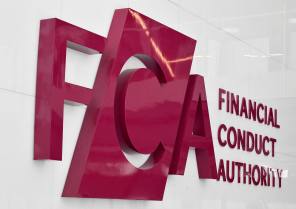

Four years since the dramatic changes that followed the Retail Distribution Review, the Association of Professional Financial Advisers has revealed the state of the intermediary industry today.
Here are the five key points from Apfa’s Financial Adviser Market: In Numbers report.
1) Adviser numbers remain flat
Despite HM Treasury and the Financial Conduct Authority launching the Financial Advice Market Review in a bid to fill the advice gap, there was a small decrease in the number of firms last year.
The total number of financial advice firms registered with the FCA as at 31 December 2016 was 14,054, a small decrease on December 2015 when there was said to be 14,491.
So clearly more still needs to be done to get more humans into this industry – a long stop would clearly be a good start.
2) You won’t get rich quick
While adviser numbers remained pretty steady, profit margins were even less rosy than in 2015.
Apfa reported a steady increase in turnover continued in 2016 (up by 6.5 per cent).
However, pre-tax profits have continued to fall in 2016, at £779m (down by 6.7 per cent) while retained profits have partly recovered since last year.
Per firm average pre-tax profits were £145,716. Per adviser it stands at £30,417.
But the profit margins in the sector remained thin. So don’t go planning to buy a Lambourghini any time soon.
3) What reaps rewards is changing
FCA product sales data for personal investment firms for the second quarter of 2016 showed pensions made up 63 per cent of sales.
This was followed by protection at 16 per cent, Isas, Oeics and investment trusts at 13 per cent, annuities and drawdown at 6 per cent and bonds at 2 per cent.
NMG survey data also showed advisers, post Retail Distribution Review and the shift to adviser agreed remuneration, are now far less reliant on commission.
Typically advisers today reap 41 per cent of their income from a post-Retail Distribution Review ongoing adviser charges, 31 per cent from post-RDR initial adviser fee, 11 per cent from pre-RDR investment business and 13 per cent from commission on non-investment business.
4) You’ve never seen so few people
The average number of clients that advisers see has continued to fall post-Retail Distribution Review.
NMG reported the average adviser saw 213 clients at the start of 2014, reaching a peak of 228 in the second quarter of 2015 when pension freedoms were introduced, and falling to 166 in the final quarter of 2016.
5) You don’t know what legal status is good for you
The vast majority (86 per cent) of directly authorised financial advice firms operate with limited liability (as either a limited company or a limited liability partnership – LLP).
This percentage has increased steadily over the last six years, but nevertheless 14 per cent of directly authorised firms are still operating with unlimited liability as sole traders or partnerships.
Which is clearly a crazy decision.



